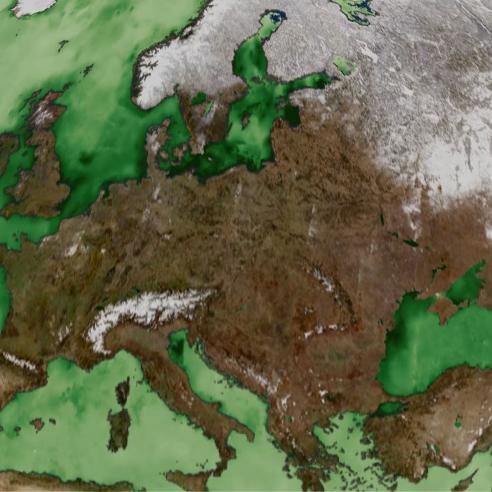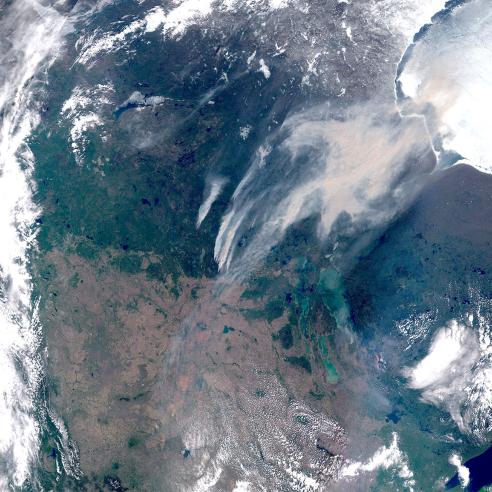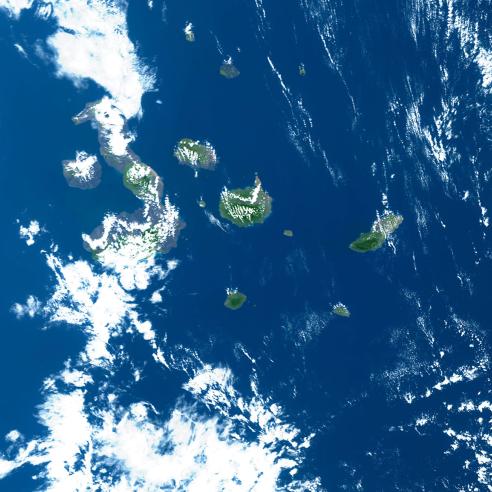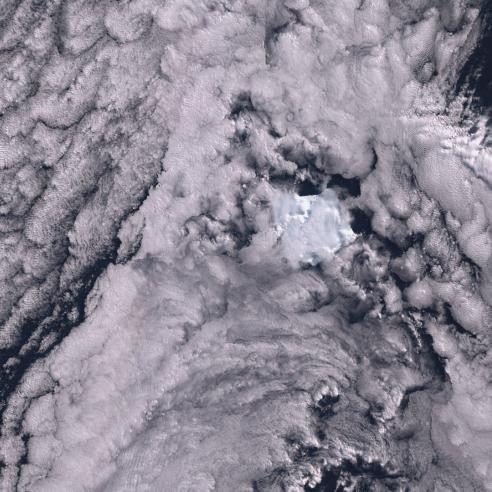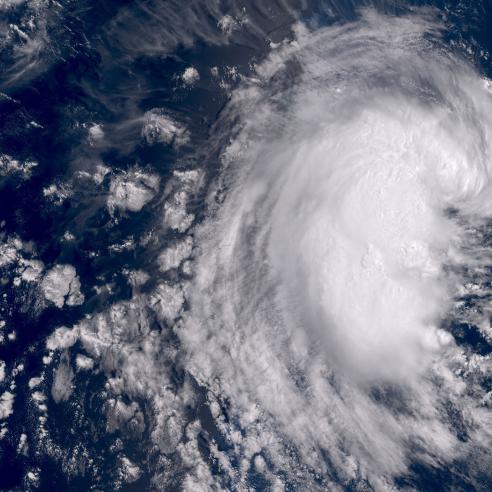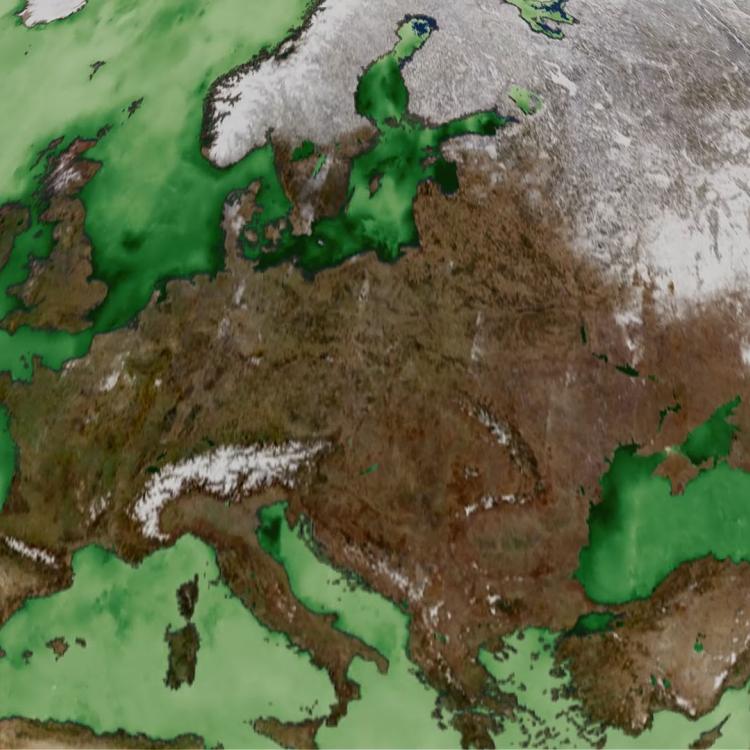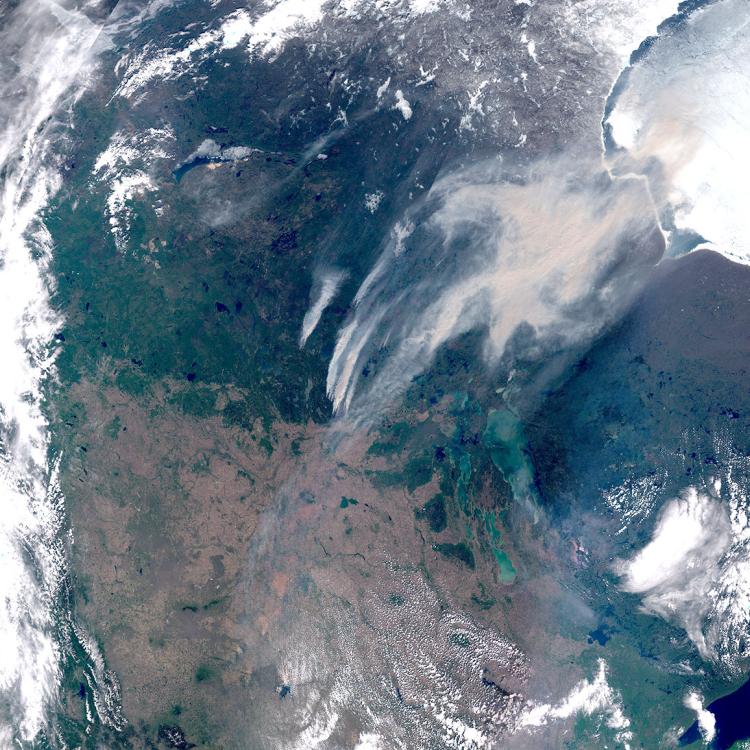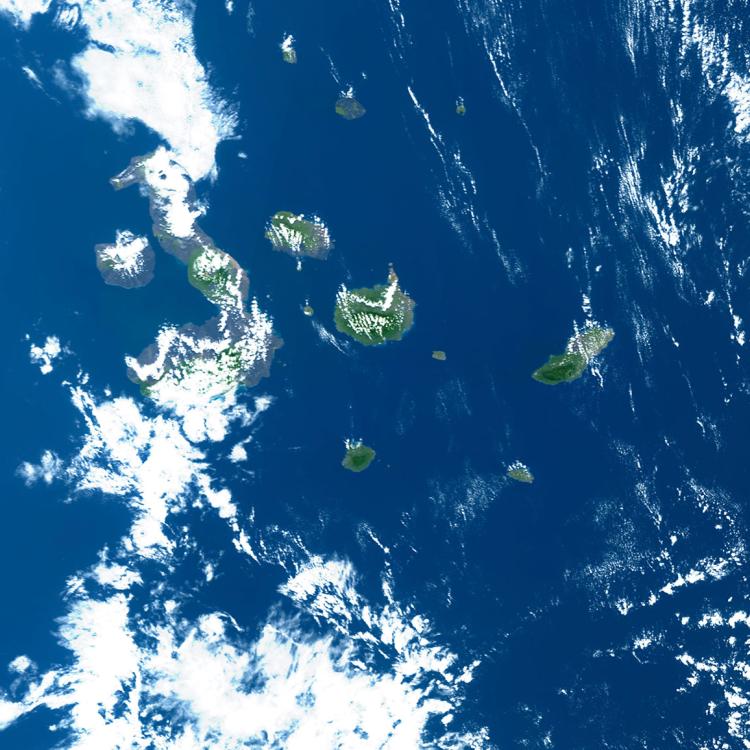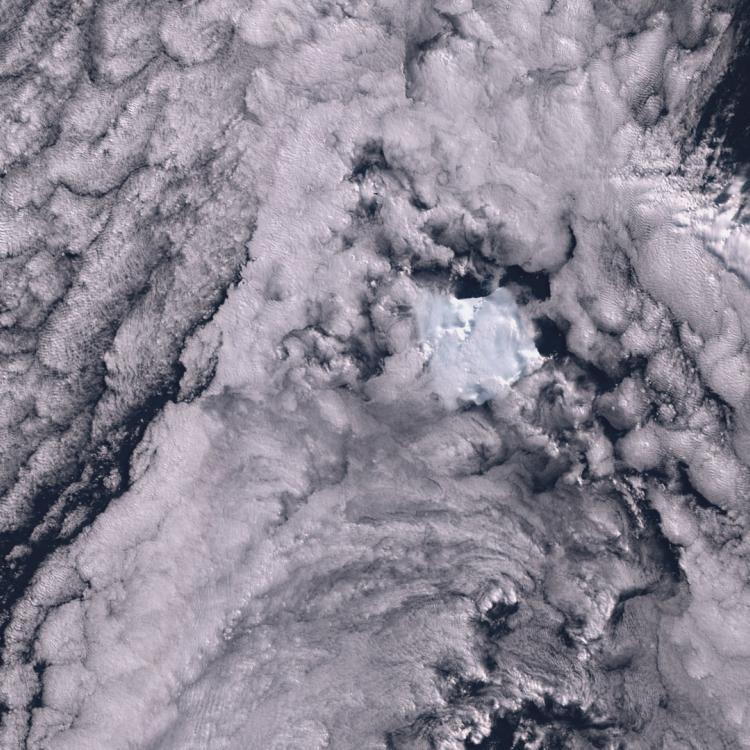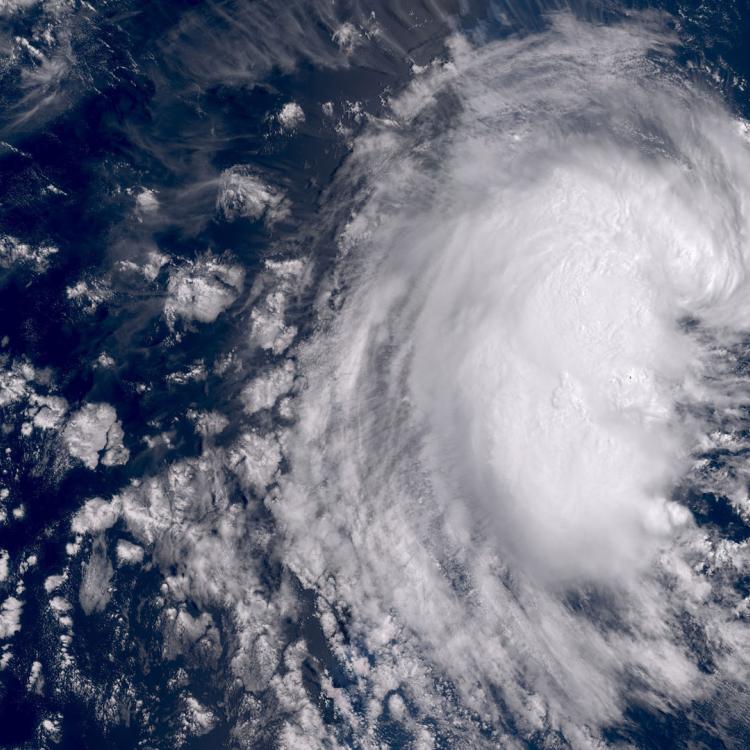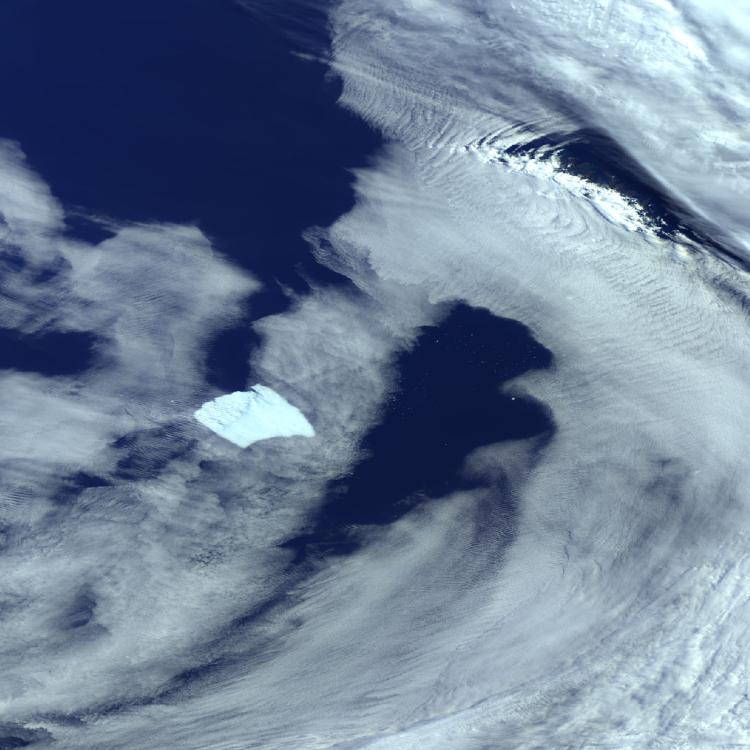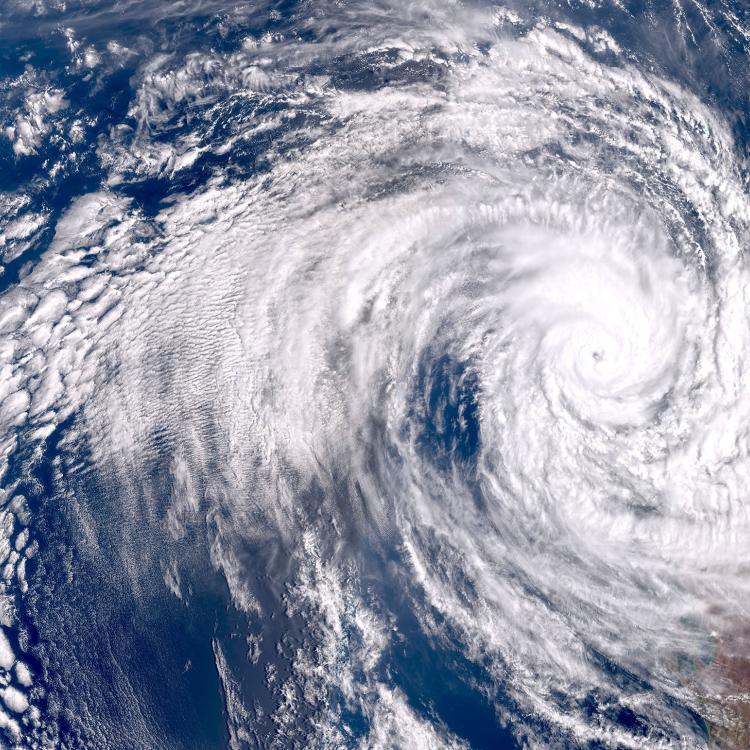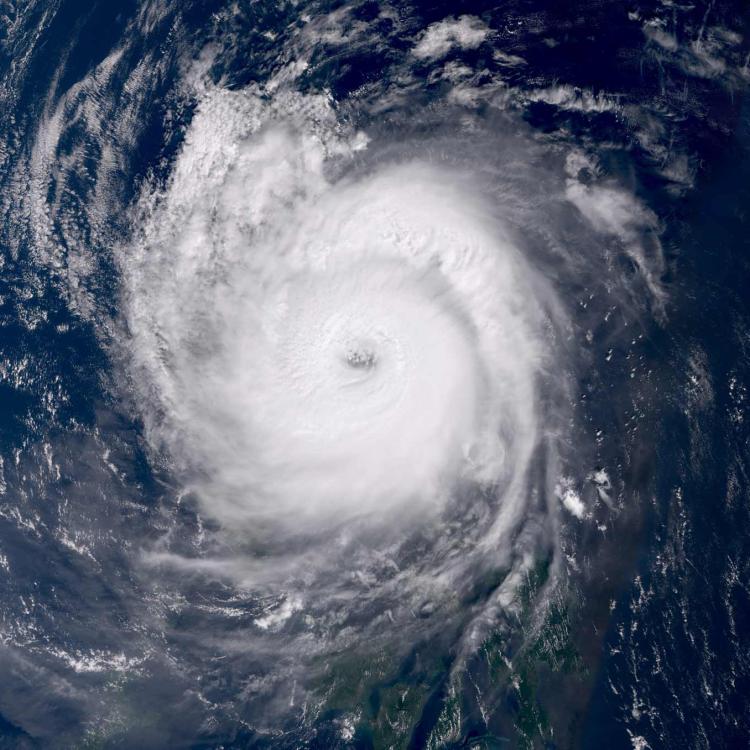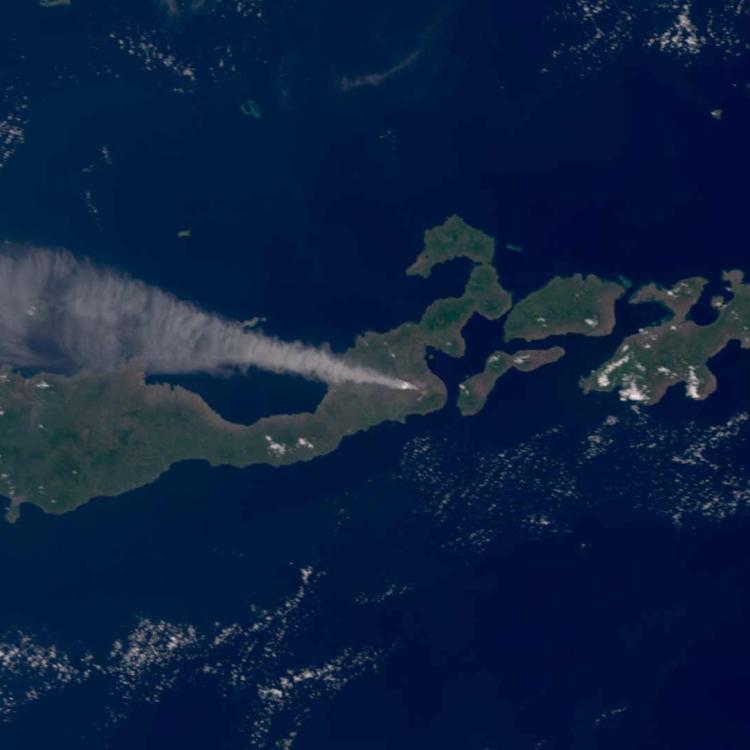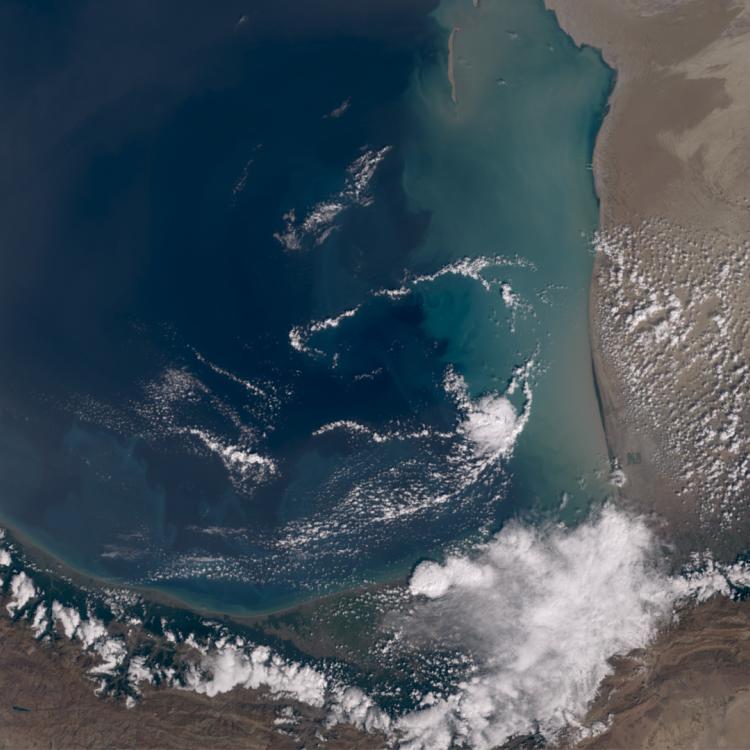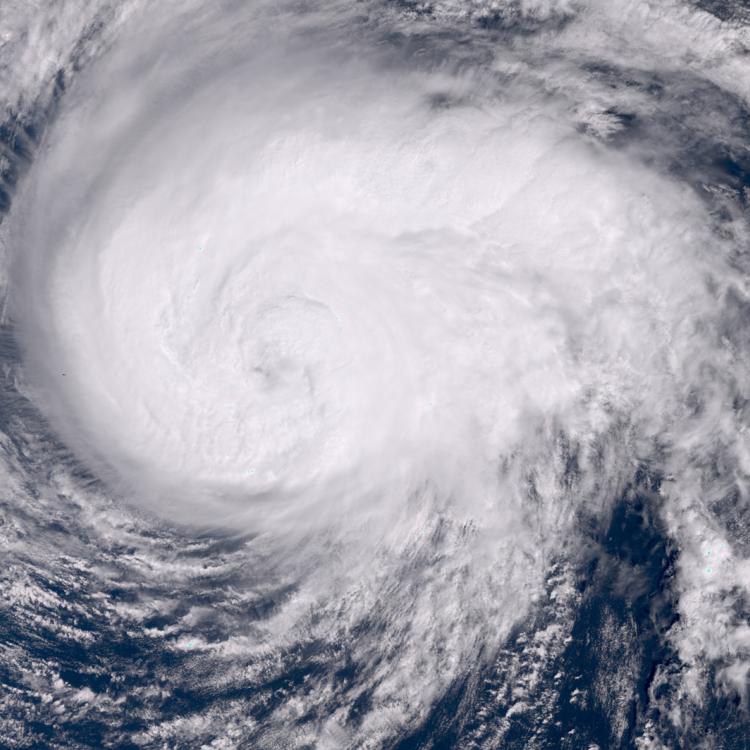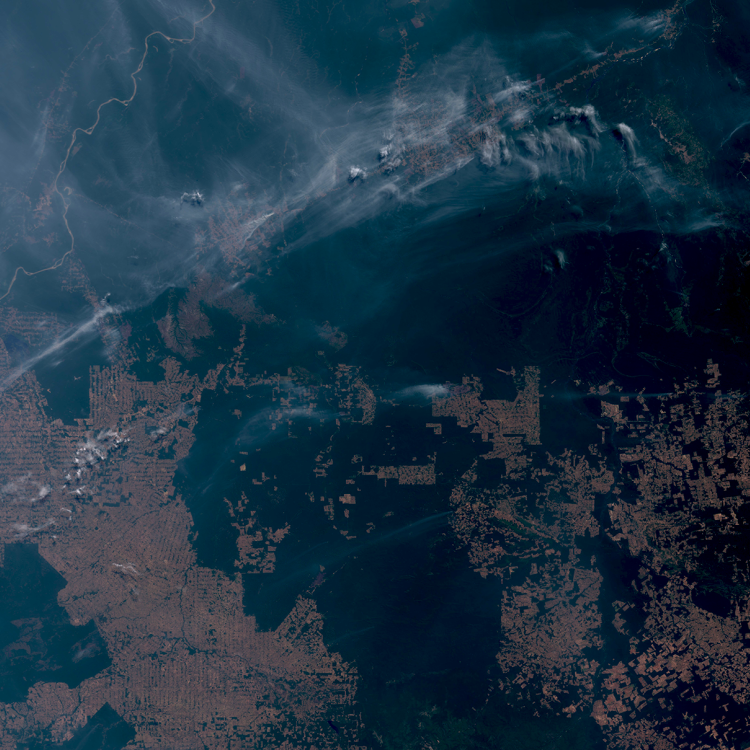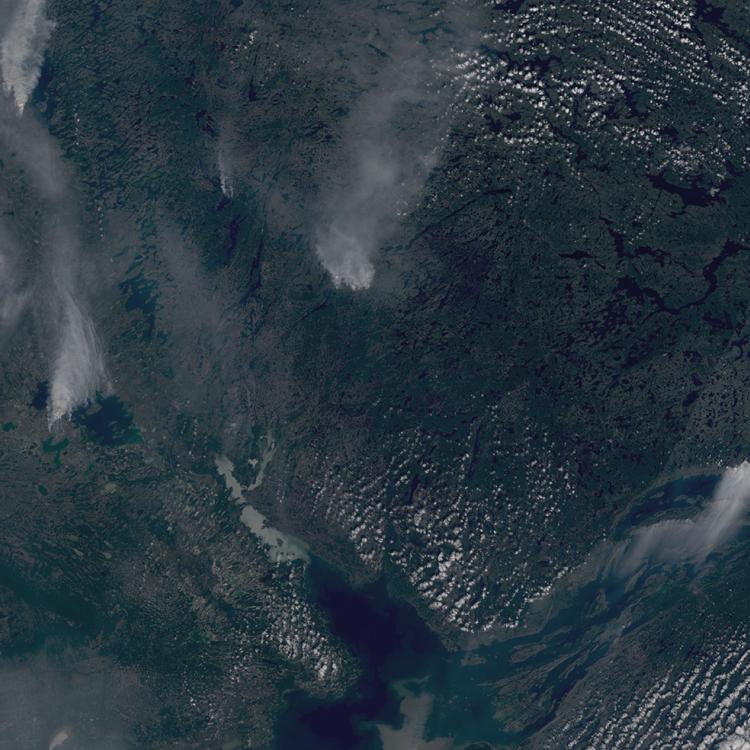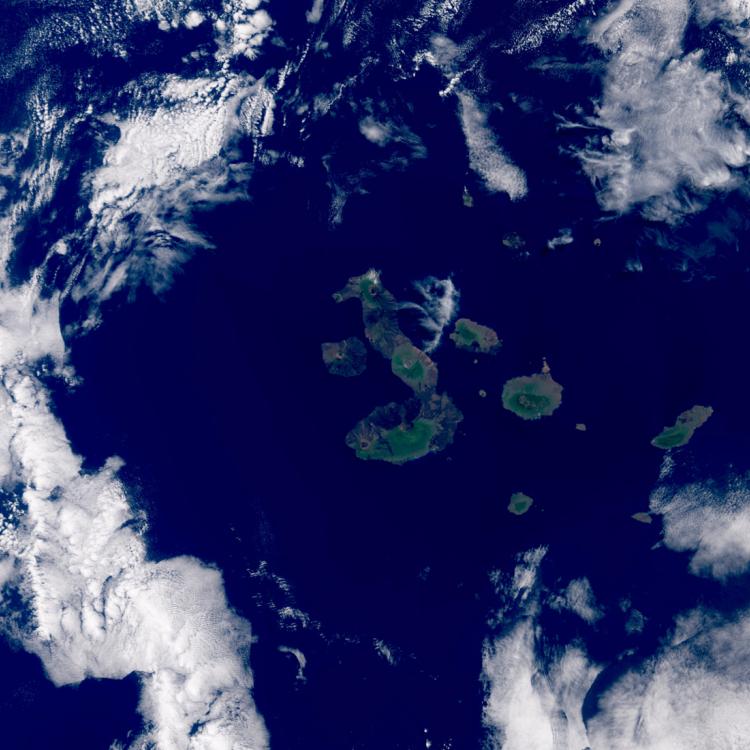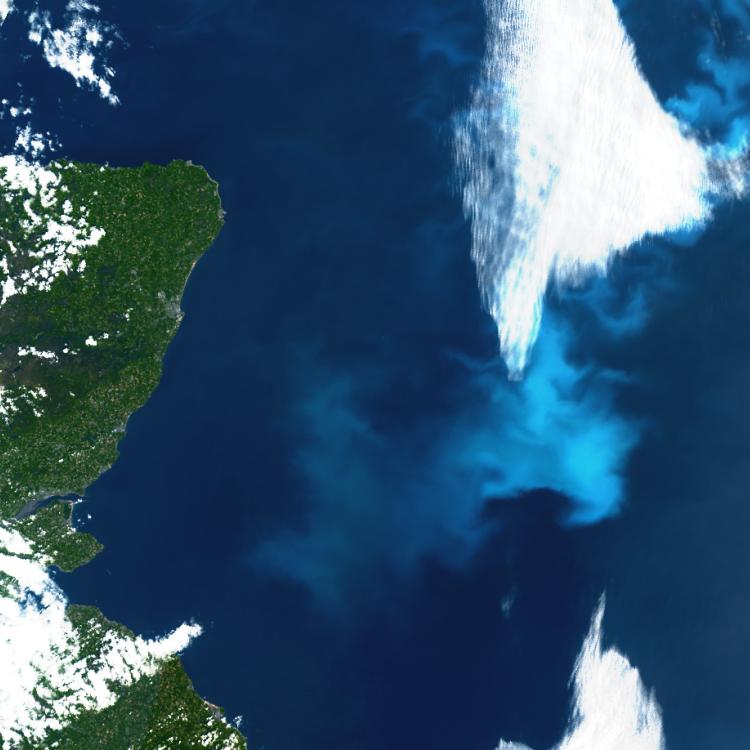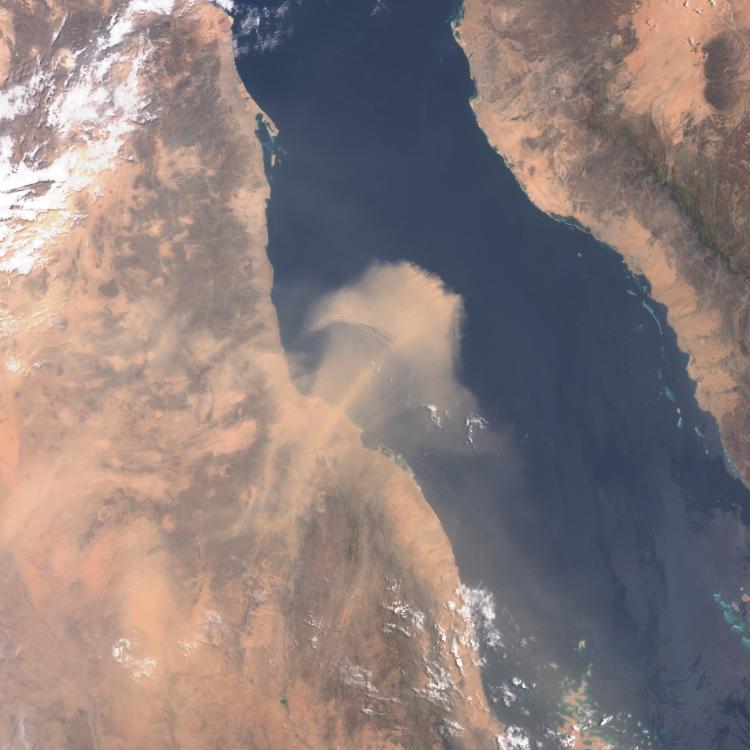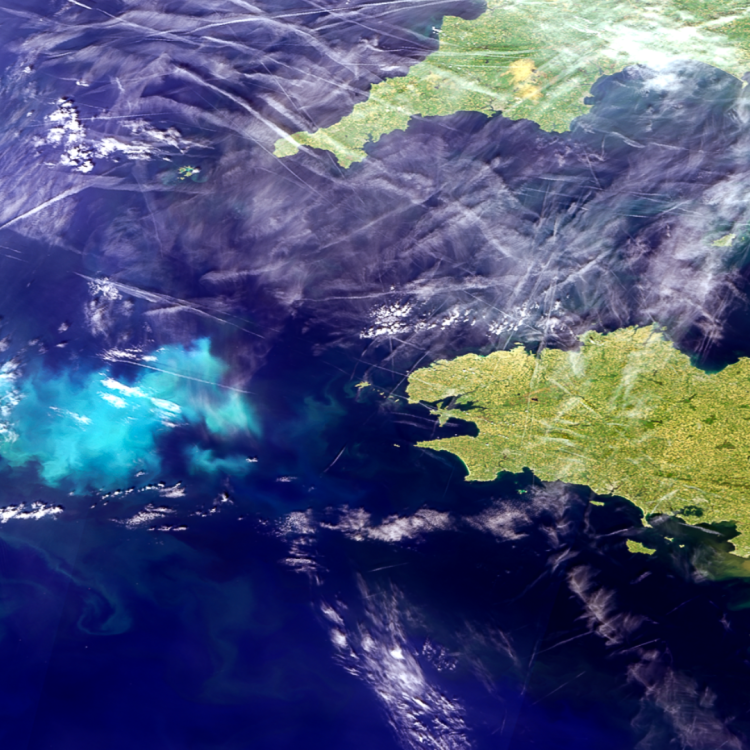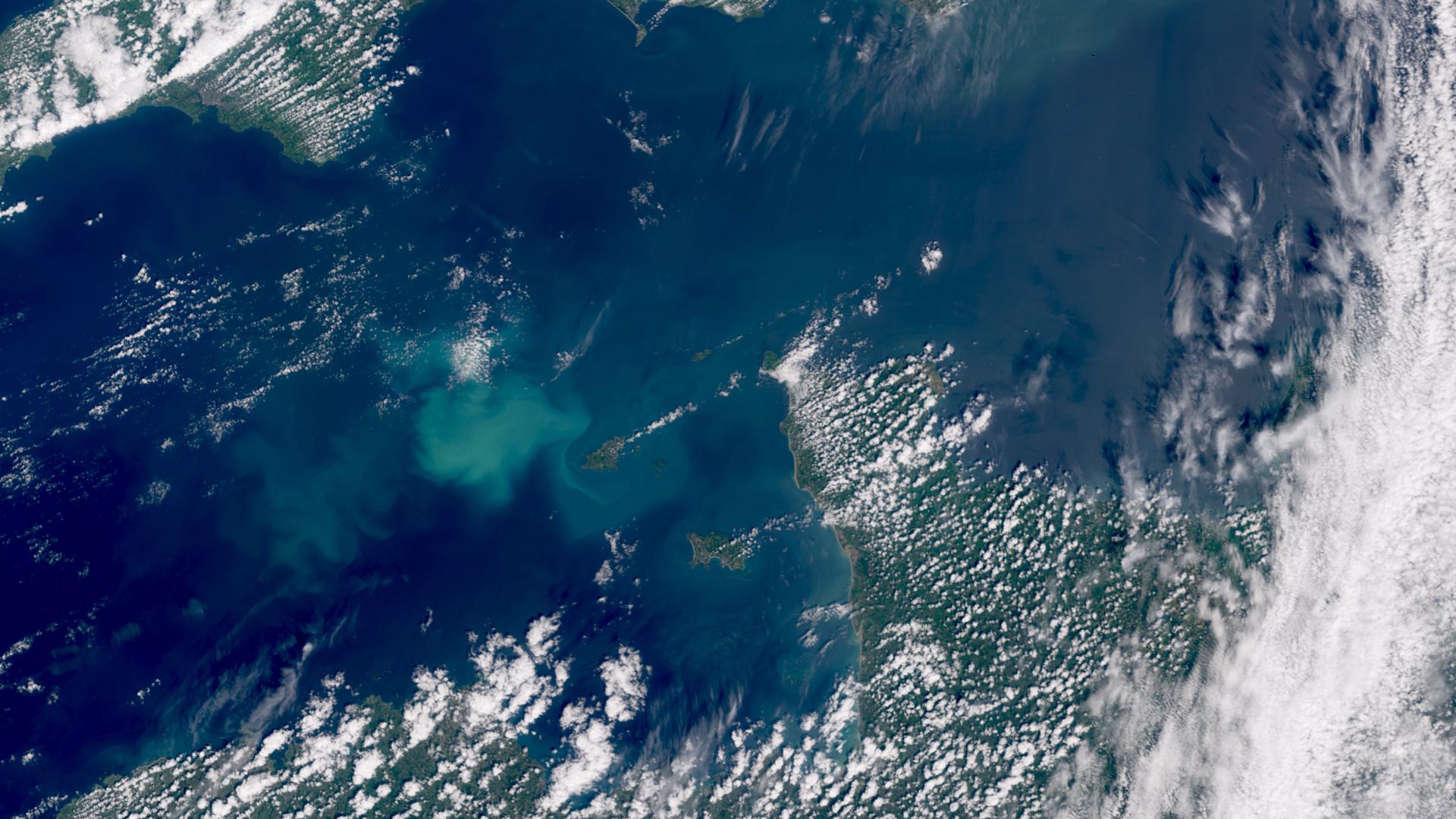
Image of the week: Marine algal bloom near Guernsey
Watching our Earth from space

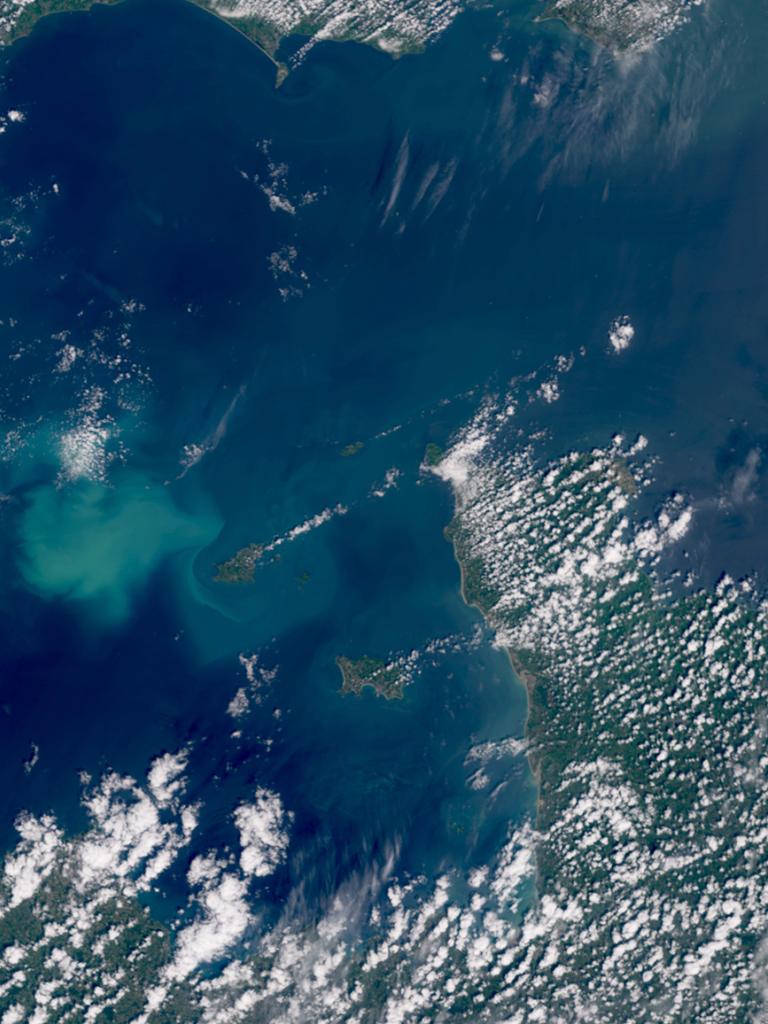
Phytoplankton are microscopic marine algae that form the basis of marine food chains. They also play a key role in sustaining life on Earth as they are responsible for producing over half of the world’s oxygen and they help regulate the climate as they absorb large amounts of carbon dioxide (CO2) from the atmosphere during photosynthesis.
The bloom (cyan colour) is most likely caused by coccolithophores which are microscopic single-celled plant-like organisms that live in large numbers throughout the upper layers of the ocean.
These tiny microscopic plants are covered in an armour plating of white chalk plates, which means that when they form massive blooms of billions of coccolithophores they can turn the sea a milky colour and this can sometimes be seen from space.

Phytoplankton bloom
The image was captured by the OLCI instrument onboard one of the Copernicus Sentinel-3 satellites on 14 June 2025.
EUMETSAT operates the Copernicus Sentinel-3 satellites, in cooperation with ESA, and delivers the marine data on behalf of the European Union.
More info
Learn more about how algal blooms are monitored using Copernicus Sentinel-3 and other satellites.
Visualise a whole year of ocean colour data
Visualise Copernicus Sentinel-3 data with EUMETView or Sentinel-2 and -3 data with WEkEO
Access ocean data from EUMETSAT User Portal

